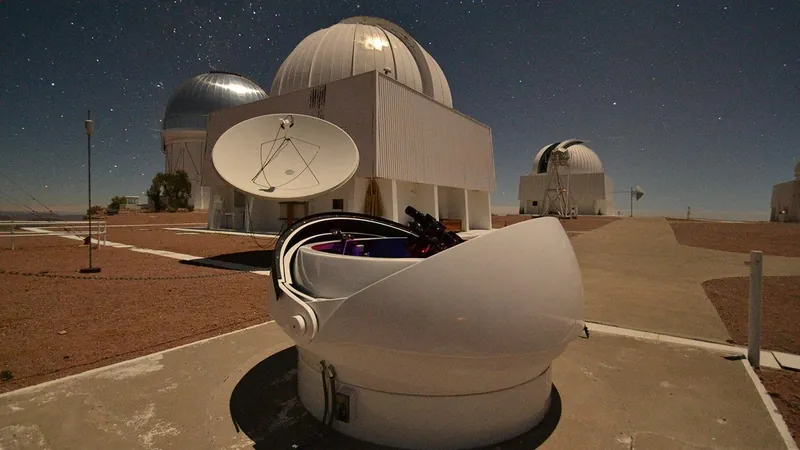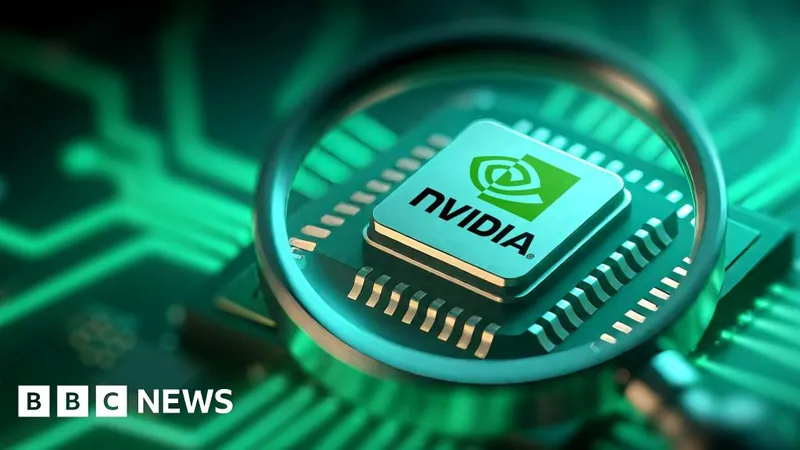
Quantum Leap: Scientists Achieve Teleportation Between Quantum Computers!
2025-06-30
Author: Emily
A Revolutionary Breakthrough in Quantum Computing
The world of quantum computing has just experienced a monumental breakthrough: scientists have successfully achieved teleportation between quantum computers for the first time! Traditionally, the more qubits you add to a single machine, the trickier it becomes to maintain stability. Researchers have tried various methods to keep qubits organized, from shielding to error correction, but stability has always seemed just out of reach.
Introducing Quantum Teleportation
But this time, a fresh approach is turning the tide. Instead of cramming more qubits into one processor, scientists are spreading the workload across multiple smaller processors. And here’s the twist: they’re using quantum teleportation to link these processors in real time! In this context, teleportation doesn’t mean transporting matter like in sci-fi movies. Instead, it’s all about transferring a qubit’s unique dual state—its ability to be both zero and one simultaneously—to a distant partner qubit.
Teleportation's First Successful Logic Gate
Imagine this: researchers successfully set up a functional logic gate between two separate quantum chips positioned about six feet apart. This remarkable achievement hints at the exciting possibility of clusters of modest processors functioning as one super-powerful quantum computer.
How Teleportation Works
You might be wondering—what’s a qubit? Simply put, a qubit is like the superhero of the computing world, able to be in multiple states at once. However, its superpower is fragile and can collapse under external influences. By employing teleportation, engineers escape much of this fragility by not physically-moving the particles. Instead, they reshape a receiving qubit to mimic the original, keeping the calculations on track.
The Ingenious Oxford Experiment
This groundbreaking experiment comes from a team at Oxford University, led by physicist Dougal Main. The researchers successfully used two specially designed atoms to create an entangled link, achieving an impressive 86 percent fidelity—enough to perform a basic logic gate. This allowed them to run a compact version of Grover’s search algorithm, yielding the correct result 71 percent of the time.
The Future of Quantum Processing
What’s more thrilling is the flexibility this approach offers. By connecting modules using photonic links, upgrades and repairs can be made without disrupting the entire system. This flexibility is crucial as industry experts envision transitioning from building a giant quantum computer to a more robust and manageable network of smaller ones.
Towards a Quantum Internet
The implications are staggering. If researchers can extend teleportation over longer distances, we might soon see a quantum internet. This network could allow communication between sensors, simulations, and encrypted nodes across vast distances, revolutionizing drug modeling, database searches, and secure communications.
Looking Ahead: Challenges and Opportunities
While the technology is still in its infancy, significant strides must be made in increasing fidelity, boosting the number of qubits per module, and automating the creation of entangled pairs. The road ahead is promising, as experts work on creating standards for labs to share their findings and components.
Quantum Teleportation: The Key to Our Computing Future
In a nutshell, the success of teleportation between quantum processors marks a pivotal shift in the field. As this innovative method moves from theory to practical application, the potential for robust, distributed quantum computers is closer than ever. Buckle up; the future of computing is being rewritten!
Stay Tuned for More!
For more exciting developments in science and technology, make sure to follow us and subscribe for the latest updates!









 Brasil (PT)
Brasil (PT)
 Canada (EN)
Canada (EN)
 Chile (ES)
Chile (ES)
 Česko (CS)
Česko (CS)
 대한민국 (KO)
대한민국 (KO)
 España (ES)
España (ES)
 France (FR)
France (FR)
 Hong Kong (EN)
Hong Kong (EN)
 Italia (IT)
Italia (IT)
 日本 (JA)
日本 (JA)
 Magyarország (HU)
Magyarország (HU)
 Norge (NO)
Norge (NO)
 Polska (PL)
Polska (PL)
 Schweiz (DE)
Schweiz (DE)
 Singapore (EN)
Singapore (EN)
 Sverige (SV)
Sverige (SV)
 Suomi (FI)
Suomi (FI)
 Türkiye (TR)
Türkiye (TR)
 الإمارات العربية المتحدة (AR)
الإمارات العربية المتحدة (AR)